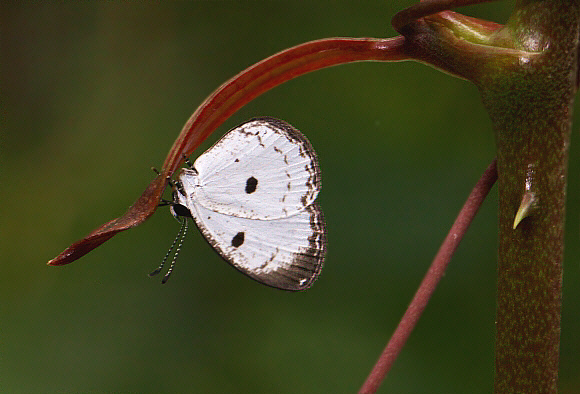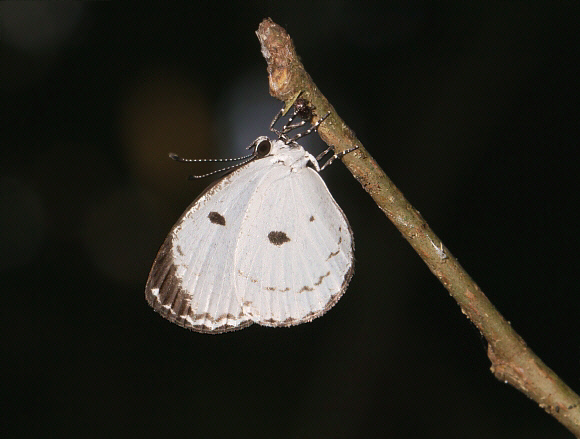
Introduction
The subfamily Lipteninae is wholly African in distribution. It comprises of 600 species varying from the tiny Tetrarhanis symplocus to the dazzlingly bright metallic blue Epitola posthumus – a species which with a wingspan of 65mm is massive by Lycaenidae standards.
There are about 17 known species of Tetrarhanis, although it is likely that at least another 3 or 4 remain to be discovered. The upper surface of the wings of all Tetrarhanis species is plain blackish-brown. When seen in flight the alternating upper and underside colours give the impression of a flashing beacon – hence the popular name “On-Offs”.
Tetrarhanis symplocus is distributed from Liberia to western Nigeria. It is considered by some to be merely a subspecies of T. simplex, which is virtually identical in appearance, and is found from eastern Nigeria to Congo. There appears to be no overlap in the ranges of simplex and symplocus, so it is possible that the range of the ancestral simplex was split into 2 halves as a result of climatic influences, causing the 2 taxa to evolve in isolation.
Habitats
This species, and simplex, are both found in tropical rainforest habitats, and both are tolerant to a degree of habitat degradation, so can be found in secondary forest and along logging roads.
Lifecycle
The eggs are laid on dry twigs on the forest floor. The larvae are thought to feed on algae coating the surface of the twigs.
Adult behaviour
This common species is often encountered in groups of 3 or 4 at dusk and dawn, when they can be found at rest hanging from tendrils or from the ends of dry twigs.

